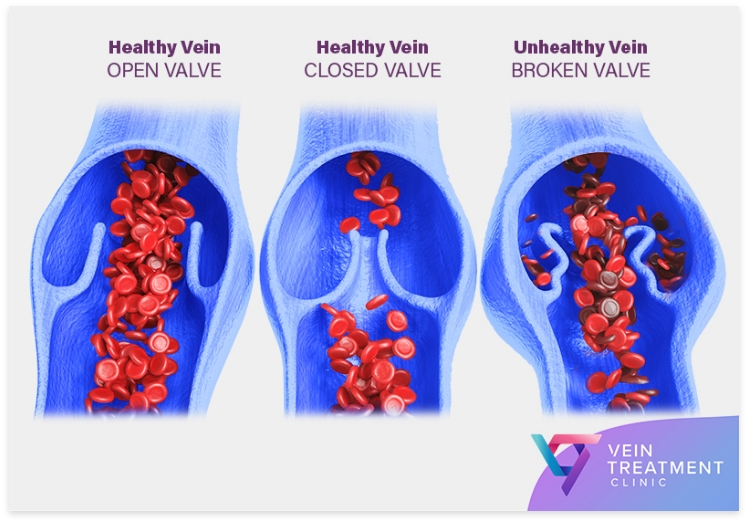Venaseal
Chronic venous insufficiency is a circulatory disorder caused by the collapse or weakening of vein valves. In healthy veins, the valves act as one-way doors, facilitating blood circulation towards the heart while preventing blood from flowing backward due to gravity. When the vein valves weaken, blood flows backward and pools in the leg veins, eventually causing vascular dilation and varicose veins.
How Does VenaSeal Work?
During the VenaSeal procedure, the vein doctor makes a small incision on the skin’s surface after delivering local anesthesia. The vein doctor uses ultrasound capabilities to guide a tube-like device (catheter) into the diseased saphenous vein. Once the catheter is in place, the vein doctor injects a medical-grade adhesive into the vein. This induces fibrotic growth and seals the diseased vein’s walls.
Once the diseased saphenous vein is closed, the accumulated blood reroutes to healthier leg veins, thereby restoring effective blood circulation to the heart. Over time, the sealed vein hardens into a scar tissue and gets absorbed by the body.
VenaSeal is one of the safest and most painless treatments available. Unlike most other minimally invasive treatments for varicose veins, VenaSeal doesn’t rely on thermal energy, so there’s no risk of harsh side effects, such as nerve injury. Furthermore, the patient doesn’t even have to wear compression stockings or ACE bandages after the procedure.

What are the benefits & drawbacks of Sclerotherapy Treatment?
What Happens After VenSeal?
With most vein treatments, patients need to wear compression stockings and ACE bandages after the procedure. However, VenaSeal also liberates you from bandages and compression stockings, making it extremely convenient.
Patients can also swim or get their legs wet after the procedure, something that’s inadvisable after other vein treatments.
Do I Need Additional Treatments After VenaSeal?
At California Vein Clinics, your veins will be treated by reputable, Harvard-trained, and board-certified vein specialists with advanced training in VenaSeal and other minimally invasive procedures. Furthermore, they’ll curate individualized treatment plans that ensure optimal results with no complications.
If you have the signs or symptoms of vein disease, please schedule an appointment with our vein doctors and regain your confidence.
Not sure if you’re covered?
Try our FREE Health Insurance Coverage Checker by filling out this form:
Contact us
Call us
If you have questions or concerns about the treatment cost or your insurance eligibility, you can call our front desk team directly. Please call (858) 988-6133
Book online
You can also schedule an appointment online via our official website. Our insurance team will contact you to request your insurance details.
Get directions
We provide clear directions to reach your nearest vein clinics in California.